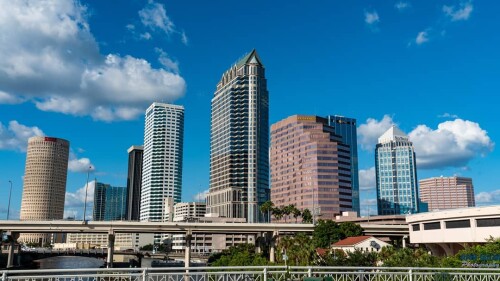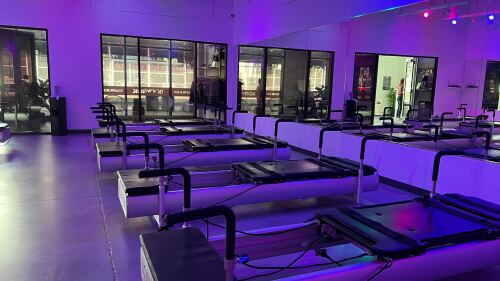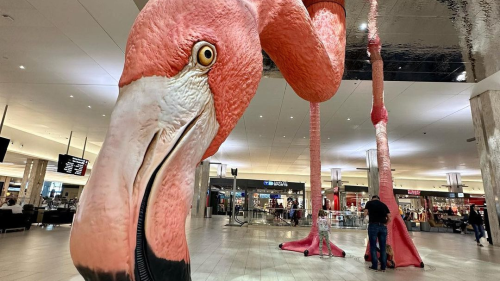The cities of Tampa and St. Petersburg were both incorporated in the latter half of the 19th century. Since that time, bustling + diverse communities have emerged, leading to streets chock-full of vibrant history.
It’s safe to say that over the years, our area has been touched by countless historical figures and happenings — many of which have shaped the names of the Tampa Bay area’s buildings, parks, and streets. In this guide, we’re delving into the history of TBAY’s streets — specifically, how they were named.
Downtown Tampa
An area of the Big Guava that is especially rich in history is downtown. Throughout its seven neighborhoods, there are streets named after a host of storied people.
Fortune Street — named after freed enslaved person Fortune Taylor, who claimed 30+ acres of farming land. The Madame Fortune Taylor drawbridge was also named in her honor.
Zack Street — named after the 12th president of the US, Zachary Taylor, who served as a major general in the War of 1812.
Kennedy Boulevard — renamed in 1963 in honor of the 35th president of the United States who visited Tampa just a week before his death. The bridge that crosses the Hillsborough River was also renamed in JFK’s honor.
Davis Islands — just a hop, skip, and jump from downtown Tampa sits this sought-after neighborhood with streets named after global locations. There are geographical references to island nations (Jamaica Avenue, Corsica Street, and Cyprus Avenue), the Great Lakes (Huron Avenue, Erie Avenue, Superior Avenue), and rivers (Severn Avenue and Rhine Avenue).
St. Petersburg
Ever wonder why in St. Pete, most street names are numbered rather than having a name? In 1928, an ordinance forced the transfer of ~600 street names to a numerical grid system to alleviate confusion, according to the Tampa Bay Times.
Central Avenue — this road marks the center line of the city’s grid, with many roads branching out of it. Streets run north to south, while avenues run east to west. There also is a loose alphabetical pattern given to a handful of roads.
Dali Boulevard — named after the famed painter Salvador Dalí, and the world-famous St. Pete museum, this stretch of road links downtown to the surrealist museum, and lines the Burg’s waterfront. Fun fact: There is an acute accent in the museum’s name, but not in the street’s.
Queen Street — there are some exceptions to the Burg’s numbers-only rule. “Q” is letter No. 17 in the alphabet, and lies ~17 blocks away from 1st Street. This follows a lexical-numerical pattern with other names too, such as Burlington Avenue + Dartmouth Avenue (around two and four blocks away from Central Avenue respectively).
Coffee Pot Bayou — the Tampa Bay Times tried to uncover the reason for Coffee Pot Bayou’s name to no avail. However, the connecting Snell Isle has European-inspired street names (such as Catalan Boulevard, Alora Street, and Seville Lane) at the behest of developer Perry Snell.
Seminole Heights
When developer T. Roy Young chose the name “Seminole Heights” for Tampa’s first suburb in 1911, he was — as any FSU fan could tell you — name-checking the Seminole Tribe of Florida. Today, the neighborhood is littered with trendy coffee shops, restaurants, and stores.
Powhatan Avenue — named after paramount chief of Tsenacomoco, or Tidewater Virginia. He united dozens of tribes and led them through early colonial years around the turn of the 17th century.
Comanche Avenue — named for the tribe renowned for their equestrian expertise. They traveled across plains, including those found in Wyoming, Nebraska, and New Mexico, before settling in Oklahoma.
Nebraska Avenue — speaking of Nebraska, this street was named for a simple reason: An influx of Nebraskans moved to Tampa in the late 19th century. The area outside downtown offered space for fishing + hunting.
South Tampa
The neighborhoods in South Tampa offer an endless choice of bars, eateries, and waterfront views. They are also home to eclectic + historic road names.
Sunset Park — this neighborhood is home to a host of literary street names. Alma Glover is credited with honoring authorial icons on Dickens Avenue, Poe Avenue, Keats Street, and Hawthorne Circle, to name a few.
Dale Mabry Highway — named for the son of a state supreme court justice + WWI sodlier. Mabry served his country before dying in a hydrogen aircraft crash in 1922.
Gandy Bridge — named after George Gandy. The developer and pioneer moved to St. Pete from Philadelphia in 1903, before operating the trolley system + leading the construction of the historic three-mile bridge, which was the longest over water at the time.
Temple Terrace
This area was founded in 1925, originally slated to become of of the US’ first planned golf-course communities. It’s also where the world’s largest orange grove once sat.
Fowler Avenue — named after Cody Fowler and his mother, Maud. Cody was a civil rights activist and lawyer, renowned for representing Black Americans in court. He was president of the America Bar Association in 1950, becoming the first Tampa lawyer to earn that title. Maud was also the first vice mayor of Temple Terrace.
Bruce B. Downs Boulevard — named after Hillsborough County’s deputy administrator in the early 80s. He served the county for nearly three decades, according to the Tampa Bay Times. Fun Fact: The “B” stands for Barkley.
Busch Boulevard — named after Adolphus Busch, founder of Anheuser-Busch. His Pasadena, California home was the inspiration for our famed theme park.
City Guides are sponsored by Water Street Tampa.













